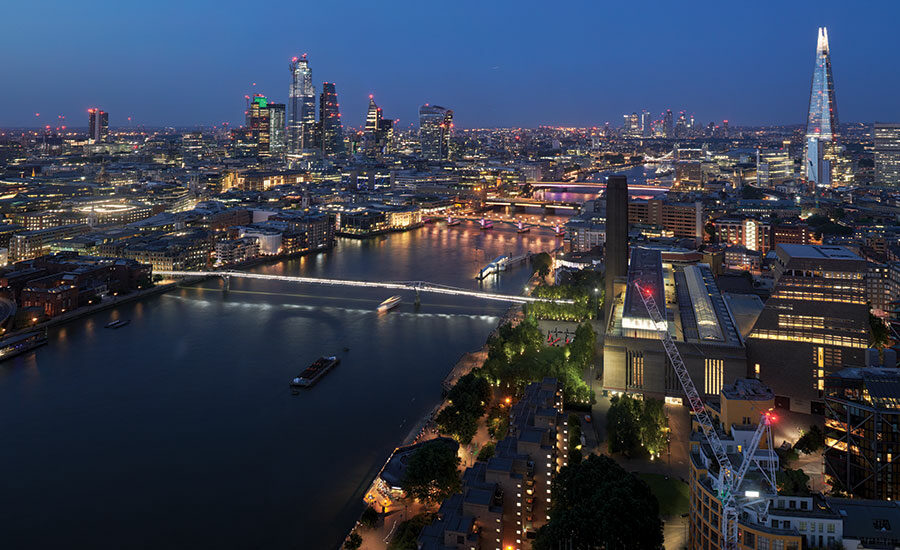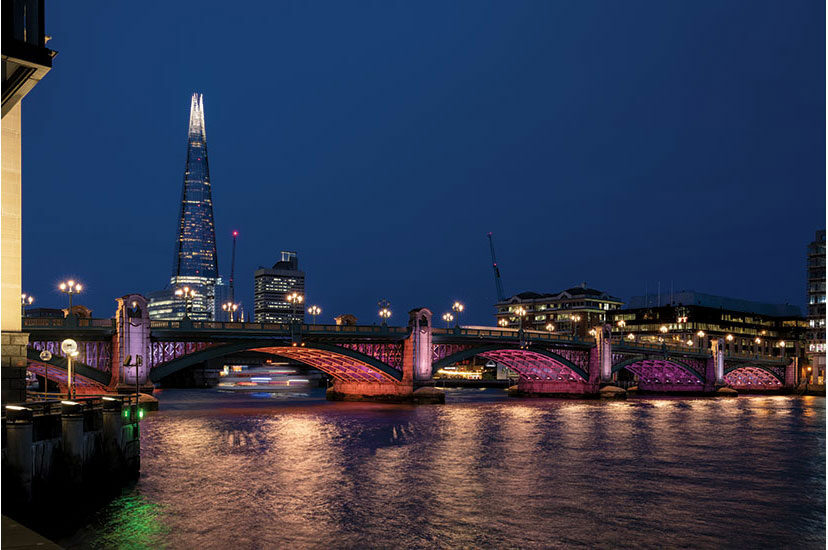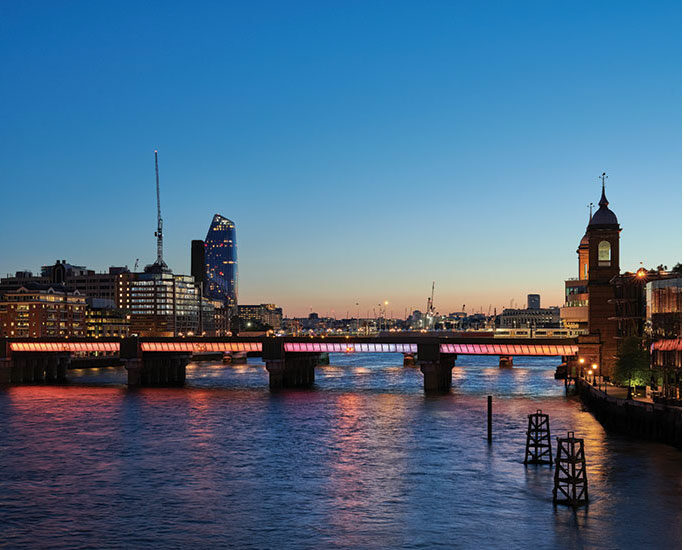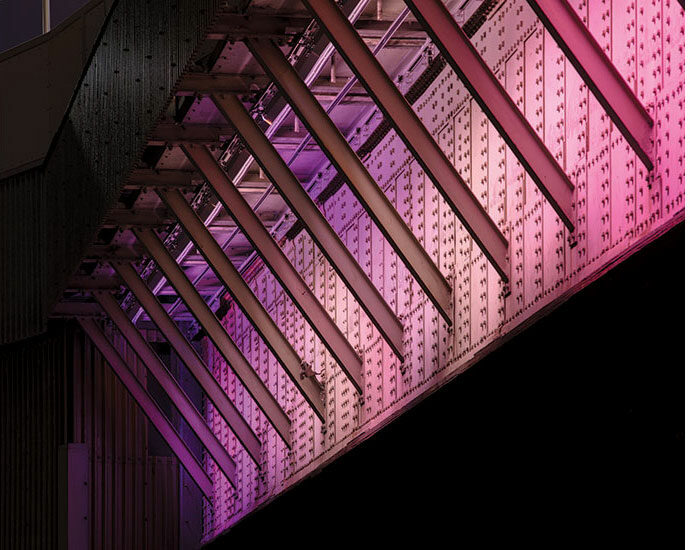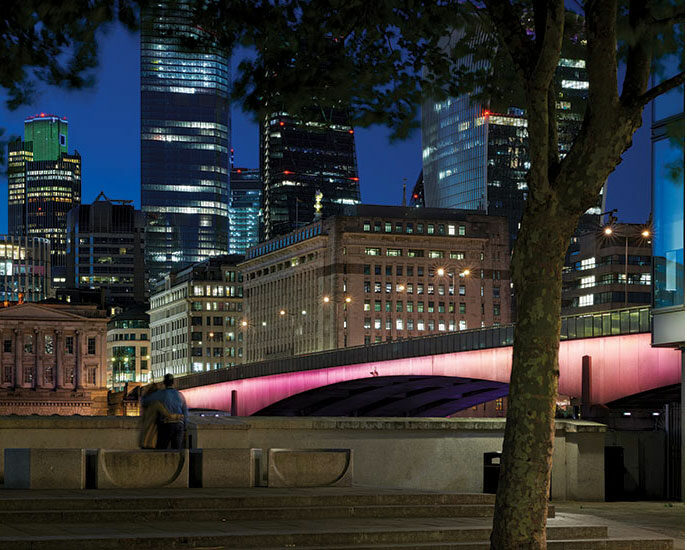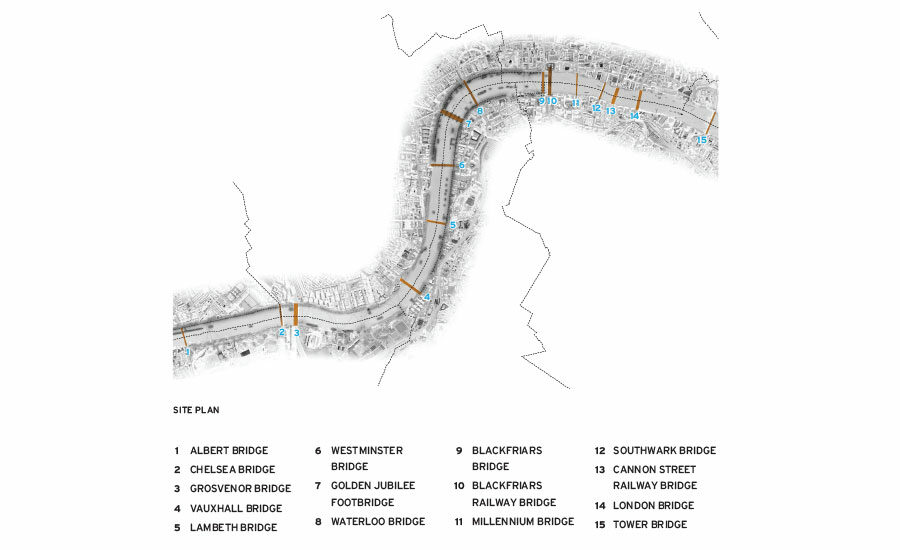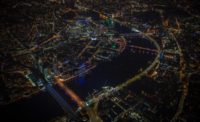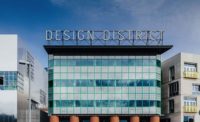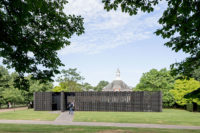As dusk falls in London and the lights come on, the grammar of the city begins to break down. Humdrum office buildings compete to outshine each other, while monuments such as St Paul’s Cathedral recede into darkness. Public parks become inky voids, but bright security lighting lends a lively aura to inconsequential parking lots. A calm corrective to this high-wattage anarchy is being offered by a new light-based artwork by the American artist Leo Villareal with London architect Lifschutz Davidson Sandilands. Phase I of Illuminated River, as it’s called, has recently been installed on four Thames River bridges, and will eventually extend to 15 river crossings.
Additional Content:
Jump to credits & specifications
The initiative, largely funded by the Rothschild, Blavatnik, and Arcadia foundations, celebrates significant pieces of civic infrastructure with gentle washes of colored light that slowly change and blend, attracting the eye not with brightness but with the same seductive pull as a flickering flame. Villareal’s interest in light and algorithmically generated pattern-making have grown in parallel since the 1990s. Software offered the possibility of change over time, “taking people on a journey,” he suggests, while light itself could “involve people’s full sensory capability— something that was lacking in screen-based digital art.”
Villareal chose his colors by watching the sky and the reflections in the water and glass of surrounding buildings, as well as studying earlier representations of the Thames by artists such as Monet. Both the palette and the movement of light vary in response to the diverse architecture of the bridges and the history of their immediate environments. “We wanted to make a subtle gesture,” he says, “not to take the bridges over, or use them as pedestals for something foreign to them.”
The current London Bridge, built in 1973, is a simple series of shallow concrete arches that links two of the city’s oldest and busiest districts. An ever-changing blend of vivid hues—lilac, cyan, and yellow—now travels across its slabbed sides, evoking the flow of traffic across the river that has occurred at this spot since Roman times.

Cannon Street Railway Bridge is a muscular hulk of riveted metal atop stubby Doric piers, and is being lit for the first time. Sturdy struts are silhouetted against a kinetic backdrop of warm pink and amber light whose movement alludes to the passage of trains above. At the more ornamented Southwark Bridge, “Leo was interested in revealing the volume within the structure,” says architect Alex Lifschutz, and a magenta haze seems to hover within its delicate tracery of Victorian ironwork.
Where a bridge has an established lighting “identity,” the intention is to preserve the familiar character while refining it. At Foster & Partners’ slender Millennium Bridge (left), known as the “blade of light,” the original illumination had dulled since its completion in 1999 and has been reinterpreted and amplified using newer, more efficient fixtures.
Developing distinct responses to each structure involved a mix of low and high technologies. Lighting engineer Jonathan Gittins of Atelier Ten examined the bridges from a boat, and even donned breathing apparatus to crawl through their inner recesses. A luminance survey of the river was produced with specialist software and used to target the lighting and minimize spill. The team built the first three-dimensional digital model of the structures, which was drawn into a video game visualization engine that is sufficiently detailed to show every light fixture and the water rippling below. For final tuning, however, Villareal returned to the sites night after night, observing the river itself and the way that people use the city.
The data collection also played an important role in convincing the more than 50 bodies that control the river, from transit authorities to the London Wildlife Trust, that due care was being taken. The project was delivered by a purpose-made charity, the Illuminated River Foundation, which staged an international competition to appoint a design team. “In our presentation,” recalls Lifschutz, “we said that, in addition to illuminating these bridges, we want to start a more general conversation about lighting in the city.” Illuminated River demonstrates that visual impact need not entail light pollution or heavy power consumption. Its LED fixtures are focused and shielded to reduce light spill significantly below that from existing installations on the bridges, and reduce energy use by up to 75 per cent. “The aim of the project”, says Lifschutz, “is to turn the minimum amount of energy into the maximum amount of poetry.”
CreditsArchitect: Alex Lifschutz Lifschutz Davidson Sandilands Island Studio 22 St Peter’s Sq London W6 9NW 020 8600 4800
Artist: Leo Villareal Leo Villareal Studio 68 33rd Street, Unit 9, Floor 4 Brooklyn, NY 11232 Tel. 212-229-1139
Engineers: M&E / Lighting Design: Atelier Ten Marine Engineer: Beckett Rankine Structural Engineer: Price & Myers
Consultants: Cost Consultants: Jackson Coles Ecology: Temple Group Ecology: Thomson Wildlife: London Wildlife Trust Planning: Montagu Evans
General contractor: FM Conway
Photographer: James Newton |
SpecificationsLighting Signify Connected LED Lighting
Energy The electricity supply for Millennium, Southwark and London bridges comes from the City of London Corporation’s appointed supplier which provides 40% renewable energy. This is expected to increase to 100% within the lifetime of Illuminated River. |
